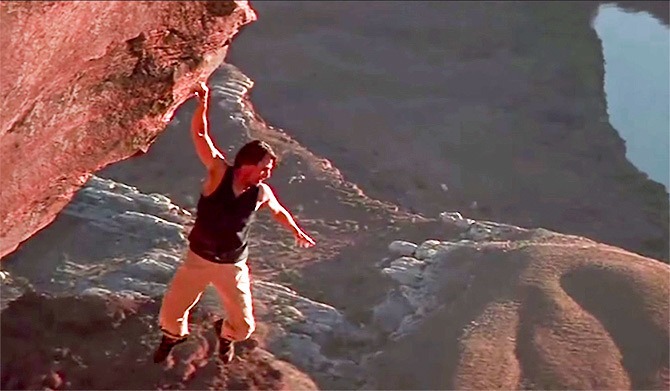reader: [ree-der] An overworked person who reads more scripts than they have time for in the hopes of discovering the next hit.
A readers’ work day begins with a pile of scripts that need to be read and assessed. This can be for a screenwriting contest, fellowship, representation, sale or production.
Statistically, the odds of finding that standout script are minimal. No matter how enthusiastic and hopeful a reader is, that’s the nature of the business. Most scripts are competent at best – a polite way of saying the parts are in the right places, but it doesn’t really make an impact.

Photo by Nathan Dumlao
Not even a pot of freshly-brewed coffee can fix these odds. It only makes the process easier. Readers also have quotas and time frames, so they often read the scripts that seem interesting at the start when they are at their most alert and their coffee is at its warmest and most aromatic.
Readers rarely read your entire screenplay with the same energy throughout.
They make up their minds if they are invested (or not) in the opening pages. They will read to the end only if they are obliged to or the work is so magnetic. A read can often mean skimming or skipping pages.
That’s why it’s so important to make every page you write present you as a screenwriter and your writing voice in the best possible light. A read should be breezy and effortless. It should be a joy not a laborious task. It should make your reader move your script into the “Hell Yeah” folder and call someone. Readers talk. Managers often ask their colleagues, “Who should I be reading?”
First Impressions Count
A reader will initially flick (or scroll) through your screenplay to check for length, formatting and density. White space is as much your friend as it is your readers. They need to feel they are in the hands of a competent screenwriter. They know the telltale signs of an amateur right away – writers who shrink their fonts and broaden their margins to stuff as much text into a page as possible.
This is often the result of writers who haven’t fully condensed their story into its core components or use flowery, novelistic language to describe something. Describing a location as a gritty, urban wasteland has a bigger impact on a reader than a paragraph that expands on this notion without adding to your story. It gives the reader freedom to visualize the wasteland without being prescribed what to visualize.
In fact, long-winded descriptions hamstring a read because a reader’s attention will drift as they look for a point down the road where the story picks up again.
The first page is always the title page. It is the first impression a reader will make of you and your screenplay before they even get to your writing.

Photo by Cottonbro
Is it clean, succinct, but most importantly, does it show care and imagination? Is it the name of the protagonist, does it give you an idea of the genre, tone, and storyline, or is it intriguing enough to invite the reader to continue? That’s not to say that all good titles make great screenplays, but a good one gets your reader invested. Bear this in mind when you submit your script to a contest, an agent, manager, or producer with ten or twenty scripts to read for the day.
A reader has inspected your front garden and is now standing outside your front door of your screenplay anticipating the goods. Make sure you deliver.
Opening Scenes
These should be a direct continuation and expansion of the title.
The metaphorical front door opens and the reader steps inside. What do they feel? Do they immediately get their bearings or do they feel uneasy? What conclusions do they draw from their first glimpses of the interior? What does the furniture and decor look like? Do they stay or do they go?
Think of these scenes as character and story building moments more than events. Consider those quiet, intimate moments a character experiences between the big action. What they do as they’re getting ready for work can be more revealing than what they do at work.
The assessment of their success is often made by the reader in the first two or three pages. Most importantly, pay extra special attention to the first scene which could run at one or two paragraphs.
Opening scenes set up the story parameters – the time, place, backstory, main characters, genre, conflict, and a suggested story narrative drive.
This could be a powerhouse opening seen in Mission Impossible movies which ran at ten minutes or so, or something more intimate that depicts the normal world that is about to be shaken up.

Ethan Hunt (Tom Cruise) in Mission Impossible 2
A common complaint that many readers make is that the opening scenes are either too derivative, reductive, or even duplicative of comparable movies, or that they didn’t do their job as well as other movies. Films of a similar genre contain similar tropes. The audience expects them, and they will be disappointed if they don’t get them. Their expectations must be served with that special spice called your writing voice. A script about a haunted house must contain — a haunted house, often secluded, with a history of things that go bump in the night.
Your creative flair shouldn’t be too outlandish. Even if you swing for the fences with your absurdist take on the haunted house story, it needs to be grounded – more specifically, EMOTIONALLY GROUNDED. The emotions your characters are experiencing will only be vicariously experienced through your audiences if their feelings of fear, rage, sadness, anxiety, and happiness ring true and authentic.
This is a longer way of making your reader care. This is the difference between a reader investing in your script and skimming through to the last page. Of course your characters still need to be motivated with clear goals and obstacles, but it’s the emotional journey that will hook your reader and make them stay.
Page 10
The majority of the story set up should be done around this point. The reader should have a sense of where the story might go, what complications and obstacles the main character might face, and what a worthy conclusion might look like.
Although this isn’t a scientific formula, most audiences expect the story proper to ramp up at this point. Something happens that compels the main character to take action. There must be a change of pace to the story as it transitions from the setup to the narrative flight.
If it happens much later, you may have started your story too soon or added too much superfluous information. If it happens much sooner, you might want to spend some time building the world and your characters’ backstories.
Page 20 is another key milestone in your screenplay. It is ostensibly the completion of the first act of your story. The wheels are in motion and there is no turning back. This prepares the reader for more adventures, more surprises, the raising of stakes, and more complications to your main characters’ journey. If your reader has made it this far, give them an excuse to continue.
Now you have another eighty pages to write. Make sure they are as engaging as the first twenty.
